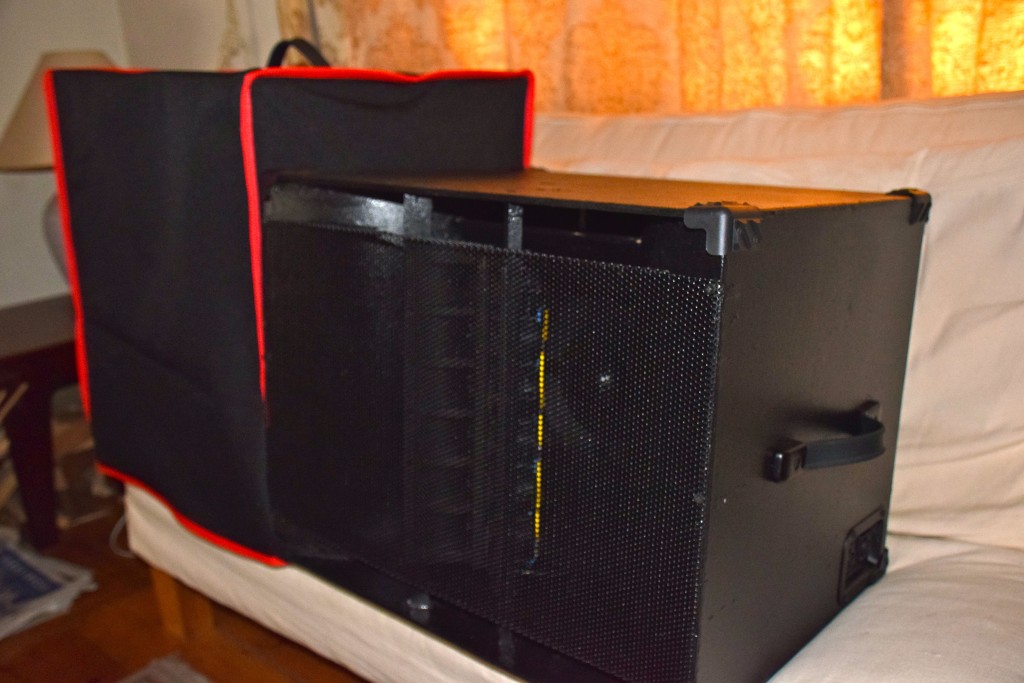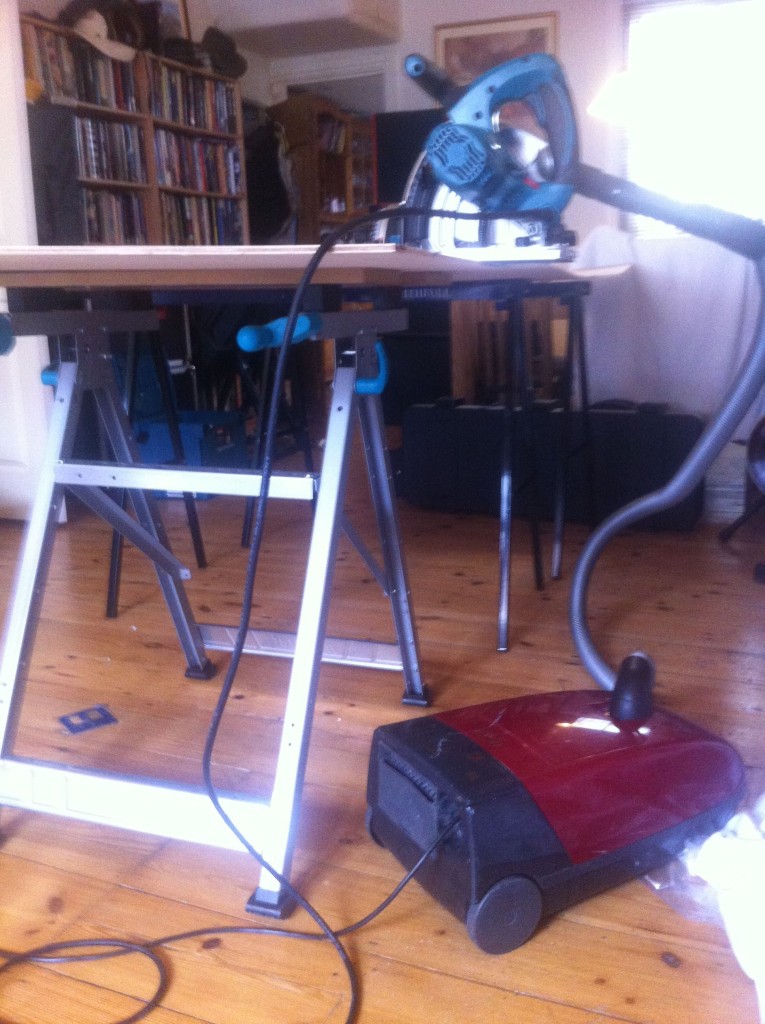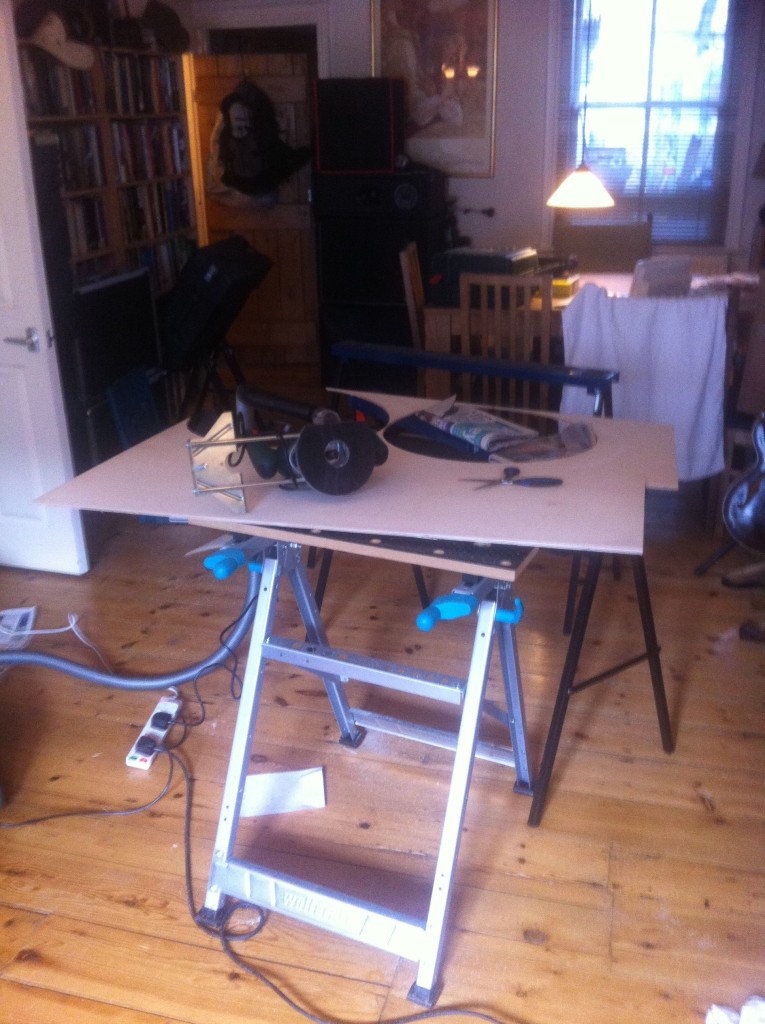A unashamedly geeky post this!!
The intention was to build a ultra-modern full range, flat response speaker cabinet, capable of reproducing really accurately all the nuances of the Axe FX’s incredible guitar cabinet emulations. These digital emulations allow you to hear the very weave of the virtual speaker cabinets through which the sound is notionally passing!!
With the Axe FX, you can programme precisely what the sounds you need, which sound incredible through headphones or my reference monitors. They also have the huge benefit at a gig, of not being dependent upon the sound guy miking up the speakers and tweaking. The Axe simply gives him Left and Right balanced line outputs which he pans hard left and right for the benefit of the stereo effects, and EQ’s to the room. No need for explanations of how it should sound, and all the misunderstandings that ensue. It’s all done! And using in-ear monitoring, all the problems are solved to the extent that you don’t even need a back line amp. Drastically reduced volume levels, far better out-front sound etc… The Axe FX is definitely the future!
However…. an amp and speaker cabinet has to reproduce precisely what the Axe processor is outputting. This is fine for most large in-house PA systems, which are full range and designed for a flat response.
But for guitarist back line amps (monitors really) the commercially-produced solutions are incredibly expensive. They are also very heavy, which after an earlier career jumping out of military aeroplanes and carrying ridiculously heavy bergans, were becoming less pleasant to carry. So I decided that a DIY solution was required.
The end result is above: weighing 20 lbs, with a horn-loaded Eminence 12 inch driver going to just below 40Hz, and a melded peizo array giving very wide dispersion running happily right of the graph at just under 105 db’s at 20 kHz, with a decently flat response. They’re two-way, splitting at 120kHz, with either a passive or active crossover. Plenty loud enough without a sub for very loud rock bands at small venues. Adding two subs takes the pressure off the bottom end, so these can go very much louder, making them great tops for medium venues. The horn-loading even allows them to do the job out of doors, which is particularly good for the reinforcement of acoustic events. More details here.
Living in central Oxford, with a tiny yard and bad weather, I did all the cutting in my living room 🙁 The vacuum cleaner worked quite well sucking up the worst of the sawdust.
But it wasn’t pretty!
The rectangular sheets of quarter and eighth inch plywood only went in as far as the hall, so I had to get them cut up quickly so we could enter and leave the house. (I have a very tolerant partner.) 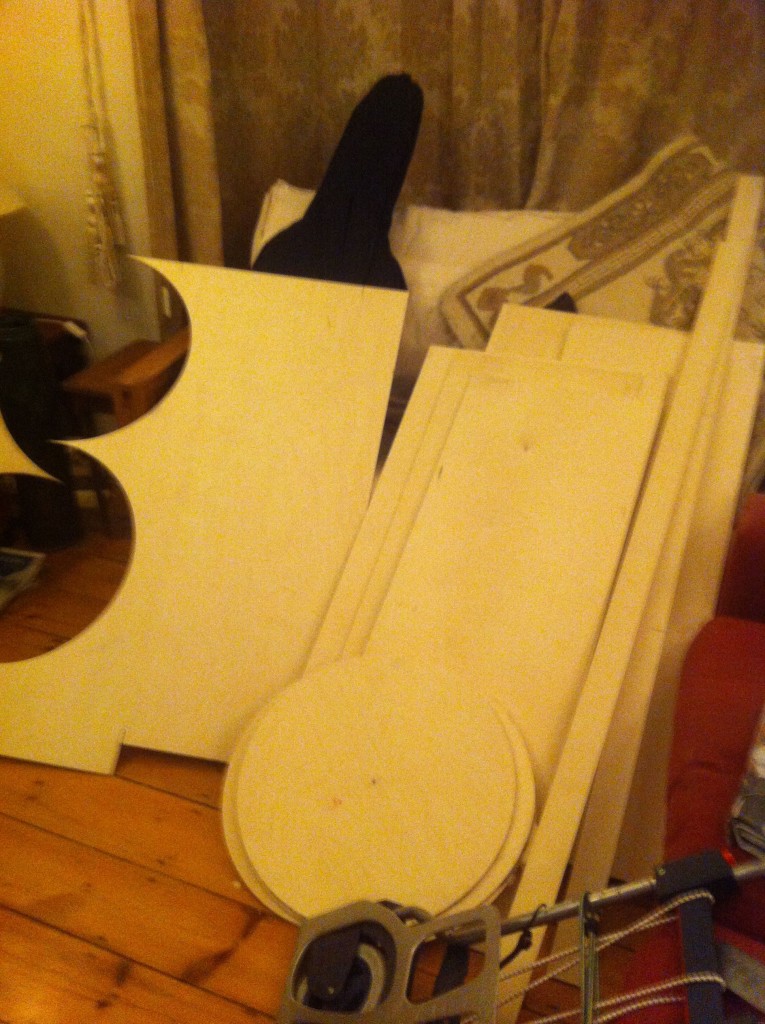
DIY method devised to form the horn’s curves in the eighth ply wood.
I discovered a software programme that would allow me to optimise the cutting of the small parts from the big sheets. 
They’re made of a casing of quarter inch ply, then mostly eighth ply inside, braced like the wing of a wooden aircraft to create the curves that allow the lower, longer frequencies to project from the cabinet. 
You can just see (above) the acoustic baffle in the centre of the 12 inch driver baffle, which is rubber pad in the speaker side, and a rubber ball cut in half on the outer side – to make the sound flow around. 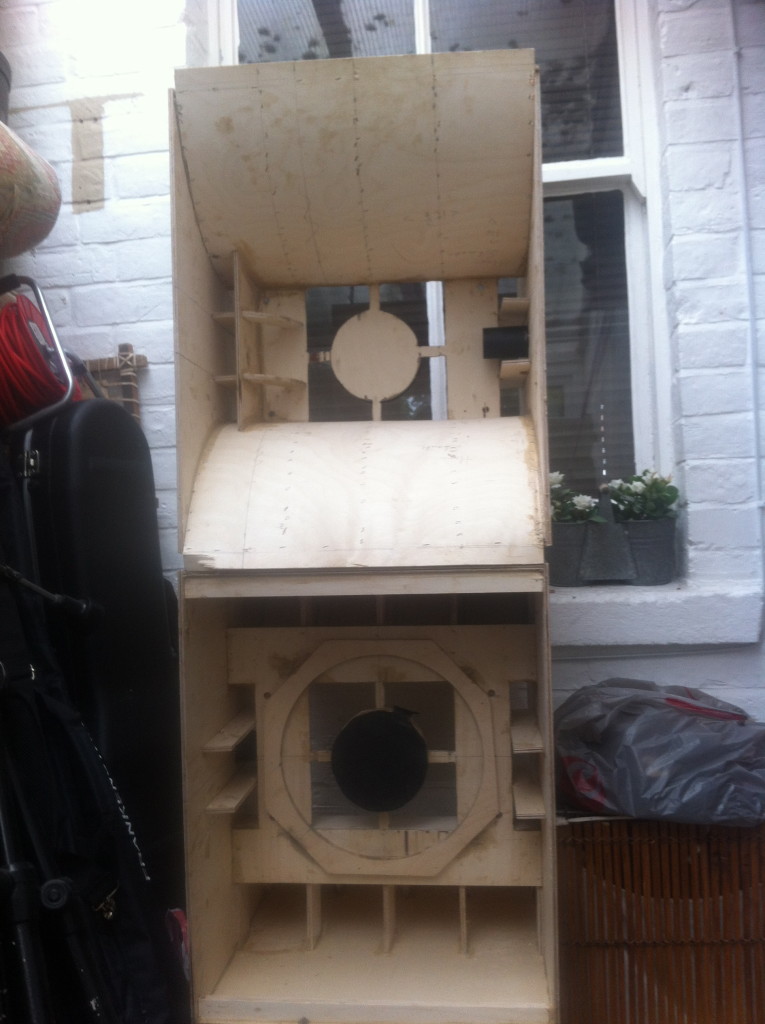
The J45 sounds great through these! (Or rather, it sounds just as it does without any amplification….) 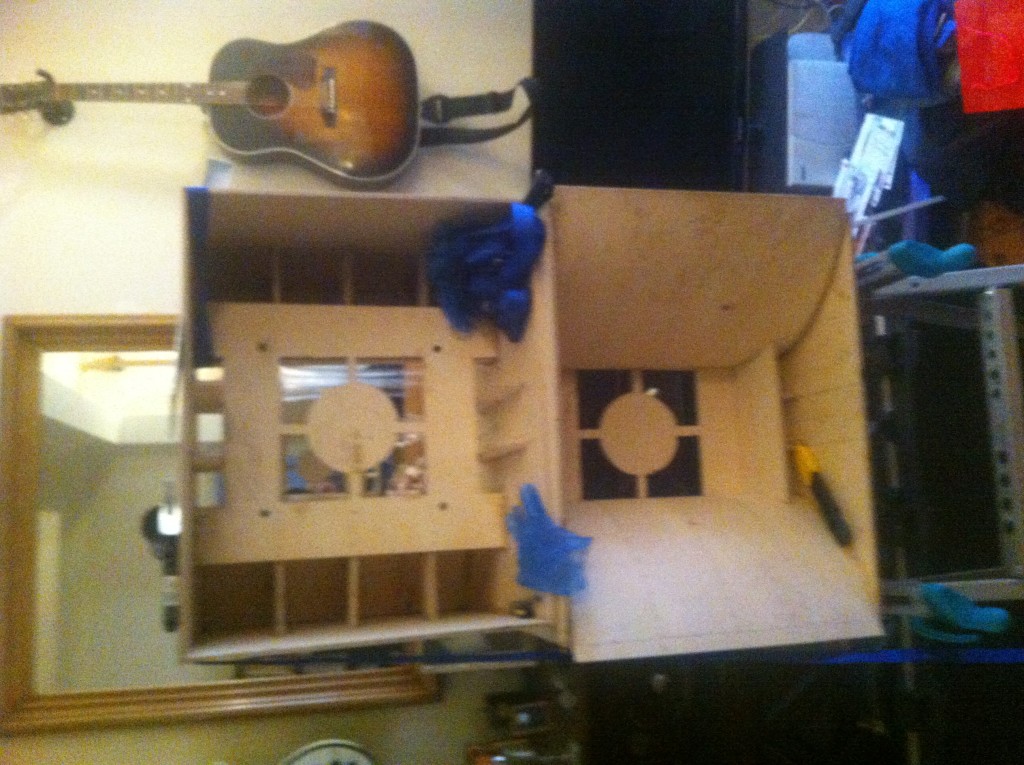
Painting was done outside on in the street, the occasional non-rainy day. 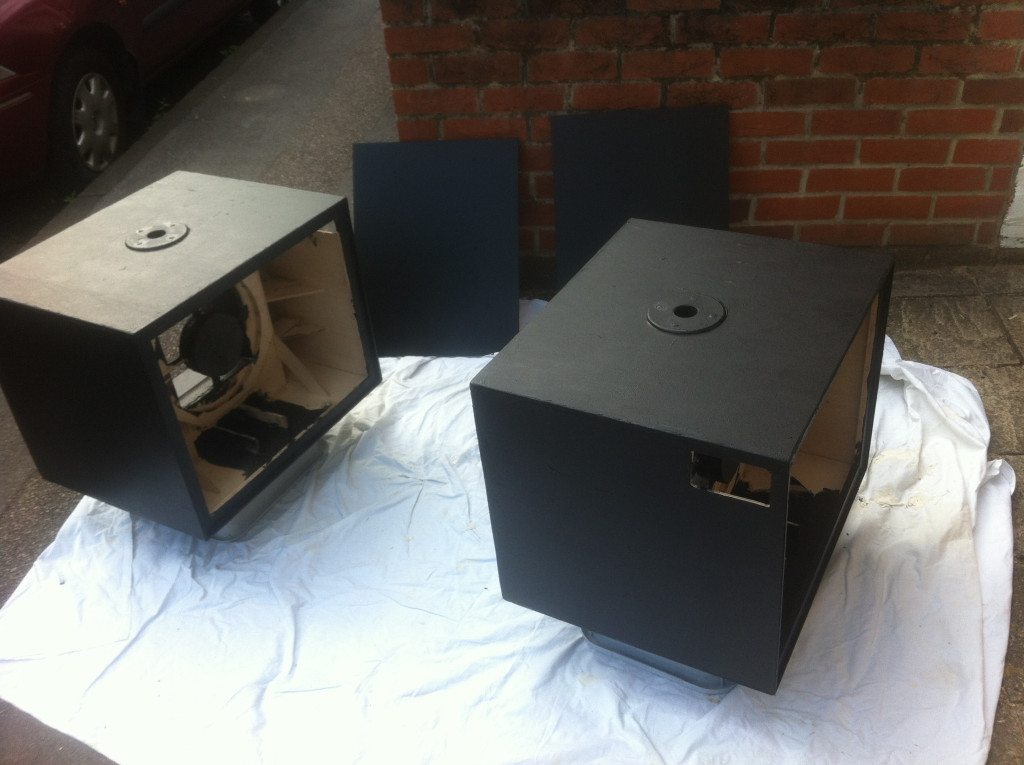
Sorry for the over-exposure from the windows. There are two rows of piezos, at 45 degrees pointing at each other to create the wide dispersion that makes these cabs so particularly useful. The 12 inch driver is at the end of the horn, with the rubber ball baffle shining.  I was sceptical about claims that some bass guitarists use these cabs without the piezos, and that two will be loud enough for the loudest metal band… Bass guitar requires special speaker cabs, and I just couldn’t see something as light as these doing the job. So-called full range monitors often do not carry bass very well if at all, and I personally will not run bass guitar through my monitors (especially if a bass player has arrived at a gig with a 30 watt practice amp that’s nothing like loud enough to contend with even a quiet drummer).
I was sceptical about claims that some bass guitarists use these cabs without the piezos, and that two will be loud enough for the loudest metal band… Bass guitar requires special speaker cabs, and I just couldn’t see something as light as these doing the job. So-called full range monitors often do not carry bass very well if at all, and I personally will not run bass guitar through my monitors (especially if a bass player has arrived at a gig with a 30 watt practice amp that’s nothing like loud enough to contend with even a quiet drummer).
But I was wrong. One of these is fine, and with a Precision bass (as I play), the piezos really make the classic Fender high frequency ‘twang’ work well. Dialling that out gives a most satisfyingly deep and resonant bass. So I’d even countenance a little bass reinforcement through these. Keys sound amazing – as do kick drums. The perfect one-man lift FRFR PA!!
Thanks for reading.
